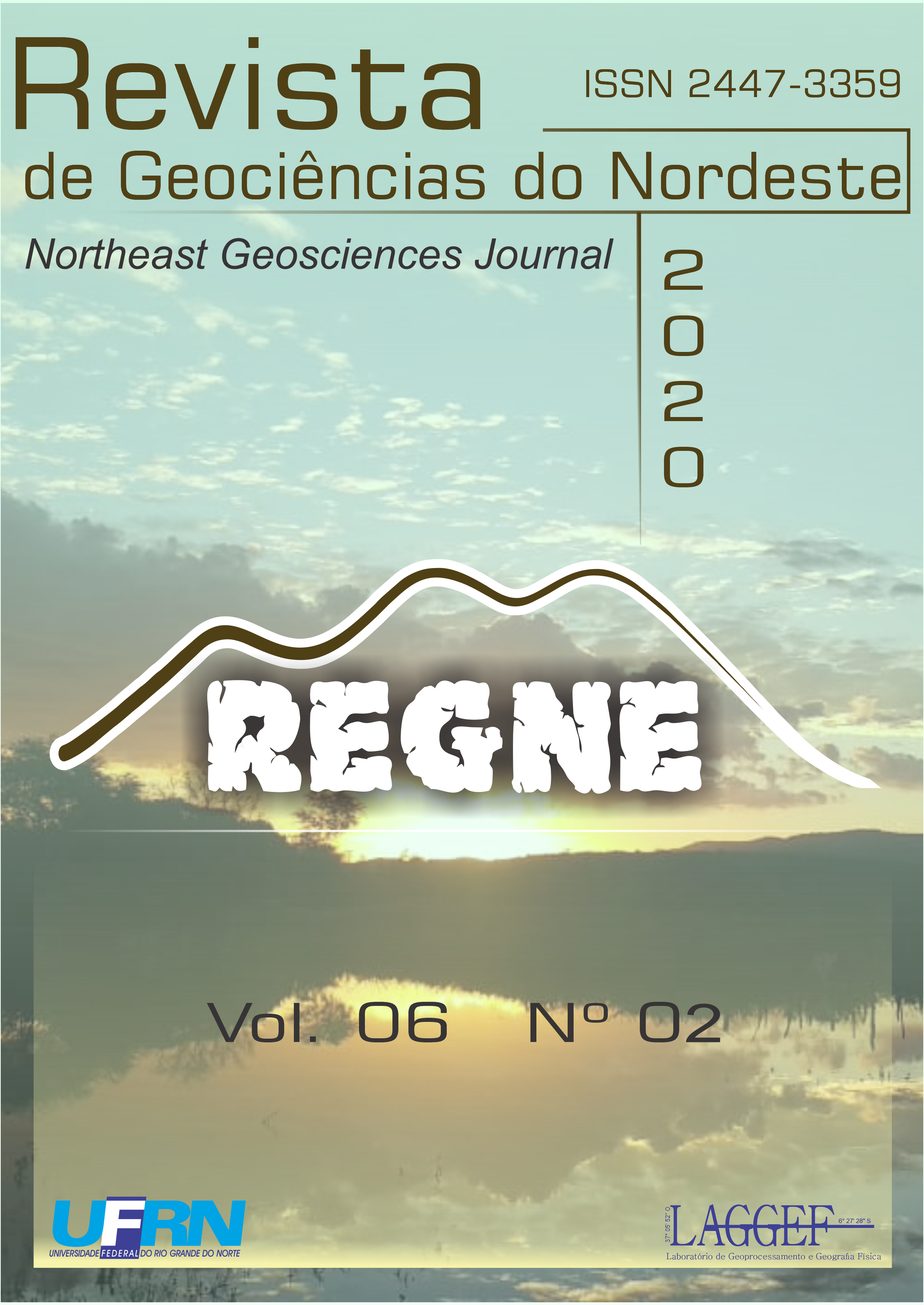PETROGRAPHY AND LITHOCHEMISTRY FROM MIGMATITIC ROCKS OF NORTH PORTION OF THE SALVADOR-ESPLANADA-BOQUIM BELT, SÃO FRANCISCO CRATON, BRAZIL
DOI:
https://doi.org/10.21680/2447-3359.2020v6n2ID19406Abstract
The study area is located in the extreme northern of the Salvador-Esplanada-Boquim Belt, in the southern portions of the state of Sergipe and northeastern state of Bahia, Brazil. This belt has three lithological groups of metamorphic rocks called Rio Real-Riachão do Dantas Migmatitic Complex (CMRR), Esplanada-Boquim Granulitic Complex (CGEB) and Gneissic/Granulitic-Migmatitic Atlantic Coast Complex (CGGCA). This article is limited to the petrological study of the first migmatites group that has been subdivided into East Granitic Migmatitic Orthogneisses (OMGL) and WestGranitic Migmatitic Orthogneiss (OMGO). Both, macroscopically and petrographically are similar, whose mineral parageneses indicate the occurrence of metamorphic processes of medium grade, from the amphibolite facies with retrometamórficas tracks. Lithochemically, it was noted particular characteristics of light and dark portions from these types of migmatites and that, although they have suffered migmatisation, kept also the characteristics of the protolith, allowing identify the felsic portions as from magma ranging from calc-alkaline regular to calcium-alkaline of the high K.


 Português (Brasil)
Português (Brasil) English
English







